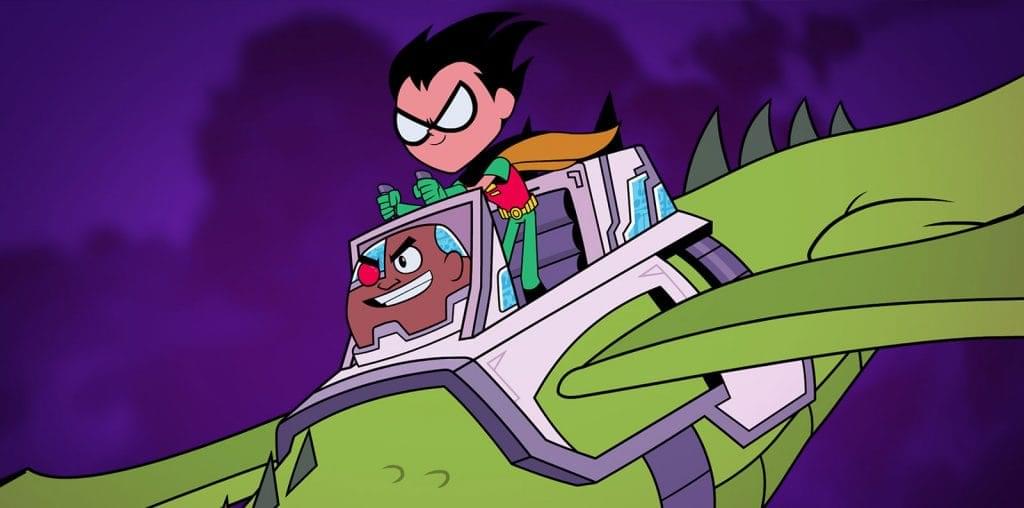
I normally don’t do comic books.
Well, I do comic books. I love comic books. I’ve read them for years, although it became such an expensive hobby, I had to give it up several years ago.
Rather, I should say I don’t review comic books.
But every now and then, a book falls into your lap that changes your mind. And while I predominantly focus on film and DVDs, this particular book has given me good reason because of its essential connection to film history.
Comic book adaptations of films is one of the safest bets in the industry. It’s right up there with death and taxes, Hollywood divorce and sequels to successful (and even unsuccessful) animated Disney films.
Often, these adaptations coincide with the release of the film so they hit the street the same time as Alan Dean Foster’s screenplay adaptation for Ballantine Books. Not all films have them, of course. When was the last time you saw the In the Bedroom graphic novel or the five-book miniseries based on Barbarian Invasions? For the genre-specific films, though, the comics hit the street as close to the movie’s release date as possible.
But not always.
Sometimes it takes years – even damn near a century – for a film to be adapted into comic book form. Such is the case with “Frankenstein.”
Now, I know what you’re thinking. There have been dozens, if not hundreds, of “Frankenstein” graphic novels over the years.
You’re right. There have been probably as many adaptations as there have been films. However, a new graphic novel has been made of the first Frankenstein film ever created. Produced by Thomas Edison in 1910, this silent film version of Frankenstein was originally believed lost. Fortunately, a print surfaced in the 1970s in the possession of Milwaukee film collector Alois Dettlaff.
While Dettlaff does not own the copyright to the film, which has slipped into the public domain, he does own the print itself. Dettlaff restricts viewing to film festivals and horror conventions. Determined to not have this adaptation completely lost on the world, comic book writer Chris Yambar and artist Robb Bihun have brought the story to life in a 40-page graphic novel.
“I think that we all owe a big pat on the back to Mr. Dettlaff for finding a tremendous film treasure which was thought to be lost in the void,” says Yambar. “Personally, I believe that he should have the film professionally cleaned and restored to its full ‘potential’ glory instead of locking it away without protection. We don’t need to lose this film to deterioration and neglect. I think that future generations should be able to see Edison’s ‘Frankenstein’ in the best light/condition possible.”
Having seen a bootleg version of Edison’s Frankenstein, I can definitely appreciate the Yambar/Bihun version. It’s the next best thing to seeing the actual film – printed in black-and-white and told with narration rather than dialogue. “The original was a silent film so I decided to keep it in the same spirit,” says Yambar.
In fact, the graphic novel brings the story to life even more than the silent film did. After all, the original film was made in the infancy of celluloid storytelling. As the film adds to Shelley’s original novel with an actual creation sequence, the history of Victor Frankenstein is added to the graphic novel. “A few story elements needed expanding in order for the film to make a logical leap into graphic storytelling, Dr. Frankenstein’s education being one of those moments,” says Yambar. “A lot was taken for granted.” The film brushes over this with a single title card that reads: “Victor learned the secrets of life and death.”
“That’s a pretty big leap,” explains Yambar. “I decided to show the reader a bit about his search and arrival using the science and occult mysticism of that time. He was a man with a god complex and was on a mission to create a creature of his own image and likeness. He succeeded but could only produce a being based on his own inner man. That was the real horror of Edison’s ‘Frankenstein.’”
The artwork in Edison’s Frankenstein has a sharp, crisp feel and interprets the monster even creepier than but still true to the original make-up from the 1910 film. But even with the temptations of modern comics and the absence of any obedience to the Comic Code Authority, the entire book is bloodless, which is how the film was originally presented. “My goal was to adapt this with as much of the original intent of the filmmaker as possible,” says Yambar. “It was a bloodless film then, and it should be adapted as such now. Why sensationalize something that is already sensational enough on its own?”
Having been a fan of the Frankenstein story, I’ve never thought Hollywood did it justice. Even Kenneth Braunaugh’s 1997 abortion, although somewhat accurate to the book, was a messy, grotesque quagmire. While Edison’s version is not exactly a fair retelling of Mary Shelly’s tale, it is a valuable treasure in Frankenstein and film history. The Edison’s Frankenstein graphic novel is a treat for any Frankenstein fan.
Included in the graphic novel is 22 pages of history text, with biographies of Edison, the actors and the director. Plus, there’s a solid essay from historian Frank Wiebel, Jr. telling the story behind the elusive film. Yambar and Bihun also give themselves some ink with bios on each.
Edison’s Frankenstein is better than most film adaptations out there on the shelves today. It gives the average horror film fan a chance to experience this hard-to-find, historic film. And, if Hollywood has any innovation left, they should consider re-adapting this adaptation for the screen. “I think that it would be a different form of horror film,” says Yambar. “One that might speak to this generation!”
Check out Edison’s Frankenstein at Chris Yambar’s website.
